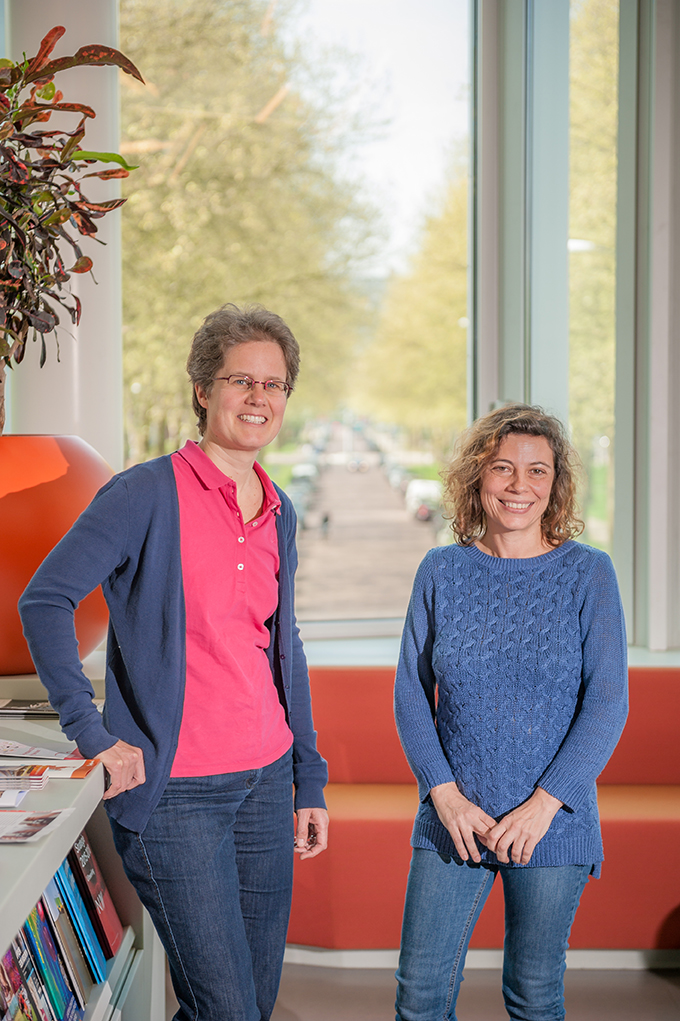In a newly granted European research project together with scientists from the Netherlands, Poland and Spain, DIFFER will develop advanced multi-scale modelling of the processes in photo-electrochemical systems. The goal of this M-ERA.NET project: understanding the mechanisms that limit the conversion of sunlight into fuels and to optimize artificial leaves towards highest performance. Project leader Anja Bieberle (DIFFER) and Sofia Calero (Universidad Pablo de Olavide, Spain) explain the need to join forces across length and time scales.
To learn how to better transform energy from sunlight into clean fuels, four research institutes (DIFFER and TU Delft, NL; Universidad Pablo de Olavide, Spain; and Politechnika Wrocławska, Poland) are pooling their expertise in modeling and simulations for improved insights into artificial leaves. Their research project Multiscale Modeling and Design of Photo-Electrochemical Interfaces involves three new post-doc positions funded for a total of three years by M-ERA.NET, the Materials section of the European Research Area (ERA).

collaborate on Multi-scale Modeling and Design
of Photo-Electrochemical Interfaces.
Photo: Bram Lamers
Artificial leaf
"Our overall goal is to have energy and electricity wherever we are and whenever we need it", says Anja Bieberle. As a photoelectrochemistry expert, she heads a research group at DIFFER which combines experiments and modeling in an artificial leaf approach: making clean fuels in a process powered by sunlight. Such solar fuels are seen as an attractive way of transforming sustainable but fluctuating energy into easily transported, long-lasting fuels which better match energy demand.
From atoms to devices
The bottleneck in artificial leaf development is the amount of energy conversions, materials and interfaces in a single device. Using incoming sunlight to drive chemical reactions involves competing processes on widely different time and length scales and optimizing one can hinder another.
"You cannot just optimize each single step to get the best device", explains materials scientist Anja Bieberle: "You have to understand first the processes taking place at atomistic level and on ultra short time scales, such as the adsorption of species on the solid-liquid interface, charge transfer, and the formation of intermediate and final species. Then, you have to consider molecular processes, like rearrangement of water molecules. Diffusion processes on the surface or in the electrolyte are the next scale; these processes might be determined by nanoscale features on the surface. Finally, the entire response of the artificial leaf is measured on millimeter to centimeter sized electrodes. To optimize the system, you need to understand what is happening at each scale."
Project partner Sofia Calero elaborates: "One group in our collaboration will look at a material at an atomic scale, another group looks at the same material on a molecular scale, for example. What we try to do is to establish a cooperation where the research of the first group results in parameters the second group can use in their simulations."
Application beyond artificial leaf
"To get a viable artificial leaf, we need a better understanding of all the processes at the interfaces in such a device", agrees Anja Bieberle. "Once we figure that all out, we can improve the interface and the materials." A possible spin-off goes beyond turning sunlight into fuels, thinks Bieberle: "there are many electrochemical devices where performance depends on multi-scale interaction. If our approach is successful, we can do similar modeling for fuel cells or electrolysers."
Go to the News page.